Black is black – Homemade squid ink tagliatelle with spicy calamari sauce
Il nero è nero – Tagliatelle con nero di seppia e salsa piccante di calamaretti
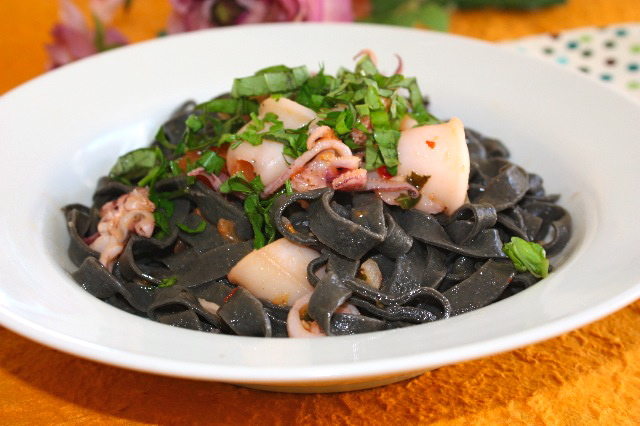
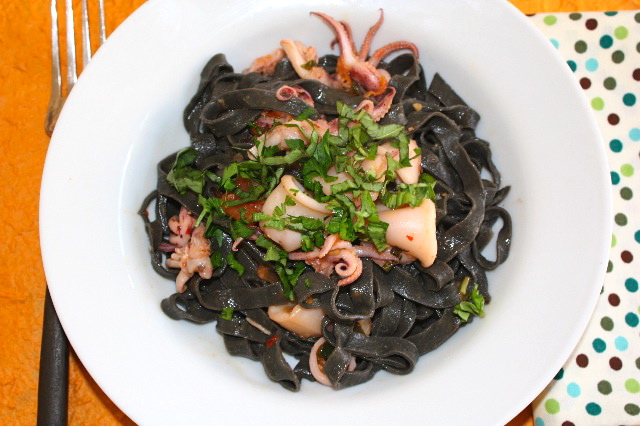
Here is my favorite pasta, that I had been thinking to make for months. I had two tiny squid ink bags in my refrigerator and was obsessing about them. Today, I finally decided to go ahead with my project. I can no longer use my pasta machine, since the kitchen counters have no extra border to hold it so I just have to use my mattarello (rolling pin) that is huge. Anytime I look at it, it looks like a huge monster rolling pin, my hands are a little small to manipulate it, but it works, I’ll just develop Rambo’s forearms soon. Anyway, let’s go back to the way traditional pasta was still made with a rolling pin, my grandma never used a machine, and my mom’s once in a while, when she was in a hurry.
Squid Ink is used frequently in the Veneto region’s cooking (Venice). They use it to make squid ink risotto and other local specialties. Of course it can be used in pasta as well, and gives a the dough a very subtle flavor without overpowering the dish, which goes to perfection with seafood sauces.
When you roll the pasta with a rolling pin, you need a large wooden board (spianatoia in Italian) to flatten out your sheet. I have a large board but will have one made at Ikea with larger dimensions for larger sheets. You also need a pasta rolling pin, it’s a little different from the regular ones, it is not tapered and that has the same size all the way, from one extremity to the other, so that your sheet will have the same thinness all around.
I like pasta rolled by hand much better than when done with the machine, the texture is more grainy therefore absorbs the sauce much better and I like the irregularity of the tagliatelle when cut by hand.
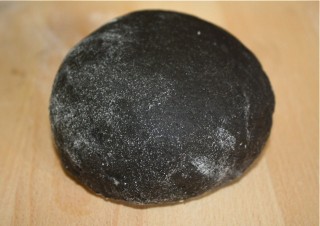
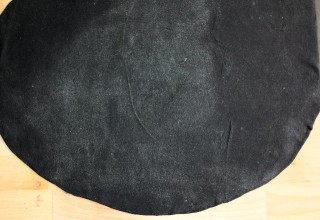
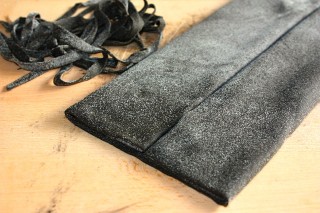
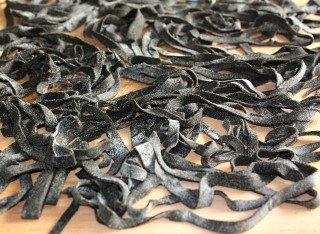
Ingredients for 4
For the dough
- 2 eggs
- 1 yolk
- 1 small bag squid ink
- 1 1/3 cup white flour or semolina flour
For the calamaretti sauce
- 1 lb calamari, cleaned and cut in 2 crosswise (except the tentacles)
- 2 large ripe tomatoes, peeled, seedless and diced
- 2 shallots, diced
- 2 garlic cloves, crushed
- 1 tbs basil, chopped
- 1 tbs parsley, chopped
- chili flakes
- 2 tbs olive oil
Preparation
For the pasta
On your spianatoia, or wooden board, place flour and make a fountain, break eggs. Dissolve squid ink in a small glass with 2 tbs water. Add squid ink to the flour/egg mixture and mix gradually all ingredients with a fork. Then when all ingredients have been incorporated, use your hands to knead the dough. If the dough is too hard, add a little water. Knead the dough for about 15-20 minutes, to get a smooth round ball. The dough should not be sticky and after kneading it for 20 min should be very smooth. You can let the ball rest in a plastic wrap for about 30 minutes, but I didn’t, if the dough is hard enough, it’s not necessary.
Then start rolling the dough, trying to spread it out evenly making a regular round sheet. The sheet should not be thicker than 1 mm. Add flour if the dough sticks to the table, but it should not stick. If it does, it means you added way too much water to the flour.
Let the sheet rest for about 10 minutes. Fold one side up th its half, then proceed the same with the opposite side.
Using a well sharped knife, cut regular strips and set the tagliatelle aside.
Cook pasta in a large pot of boiling water for about 2 minutes, or until they come out at the surface. Pour calamari sauce on top, sprinkle with additional basil and parsley and serve.
For the calamaretti sauce
In a pan, heat olive oil. Brown shallots and add garlic, then add parsley and basil, stir to get the flavors out. Add tomatoes and chili flakes, let the tomatoes cook for about 10 minutes until some water has evaporated. Adjust with salt and pepper.
Add calamari and let them cook for about 10 minutes, do not overcook or they’ll get rubbery. Let sauce redue and water evaporate.

exquisite!!